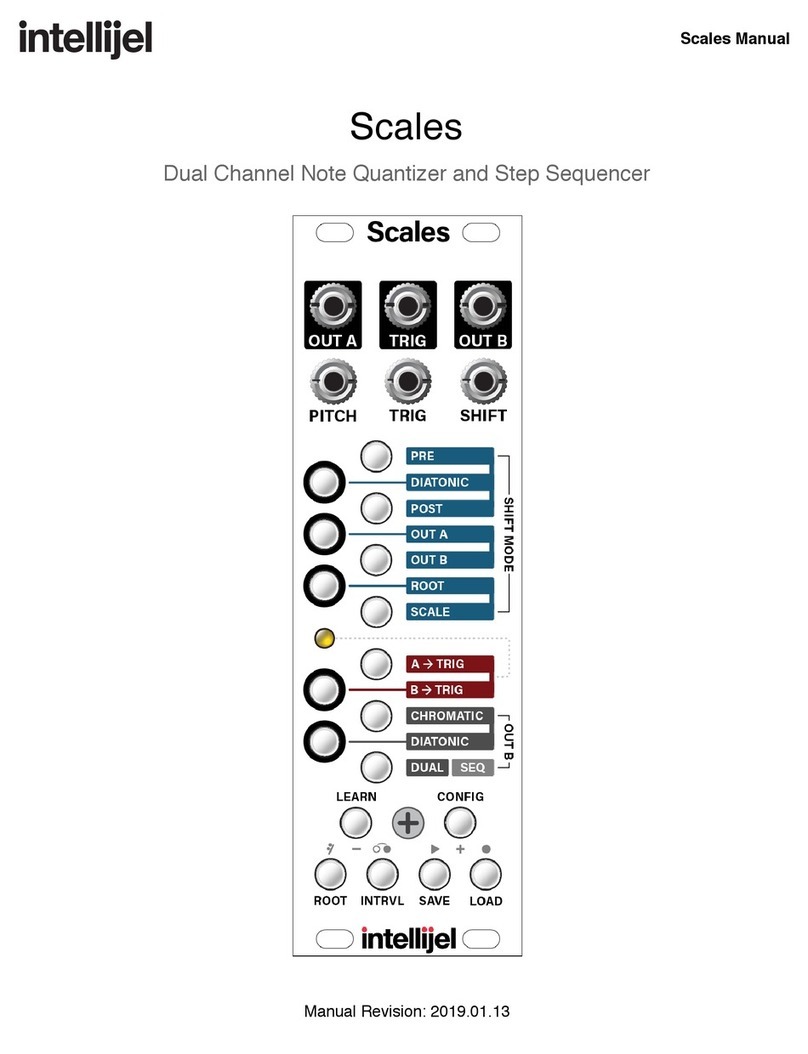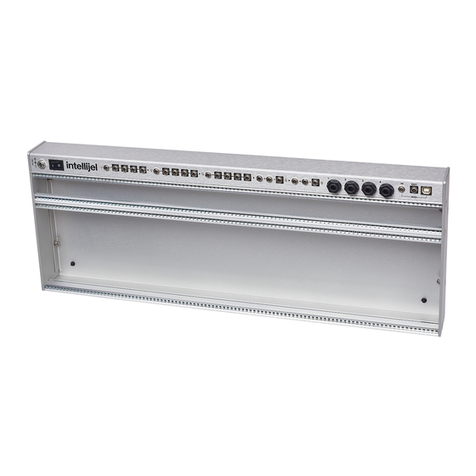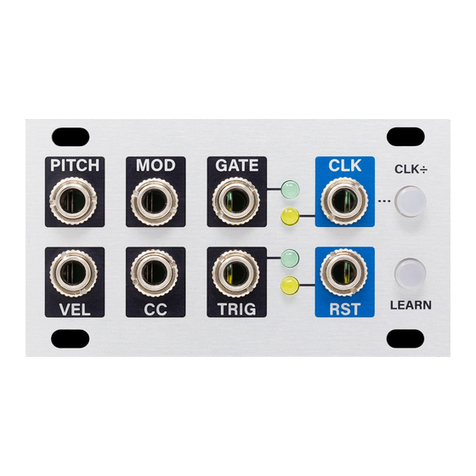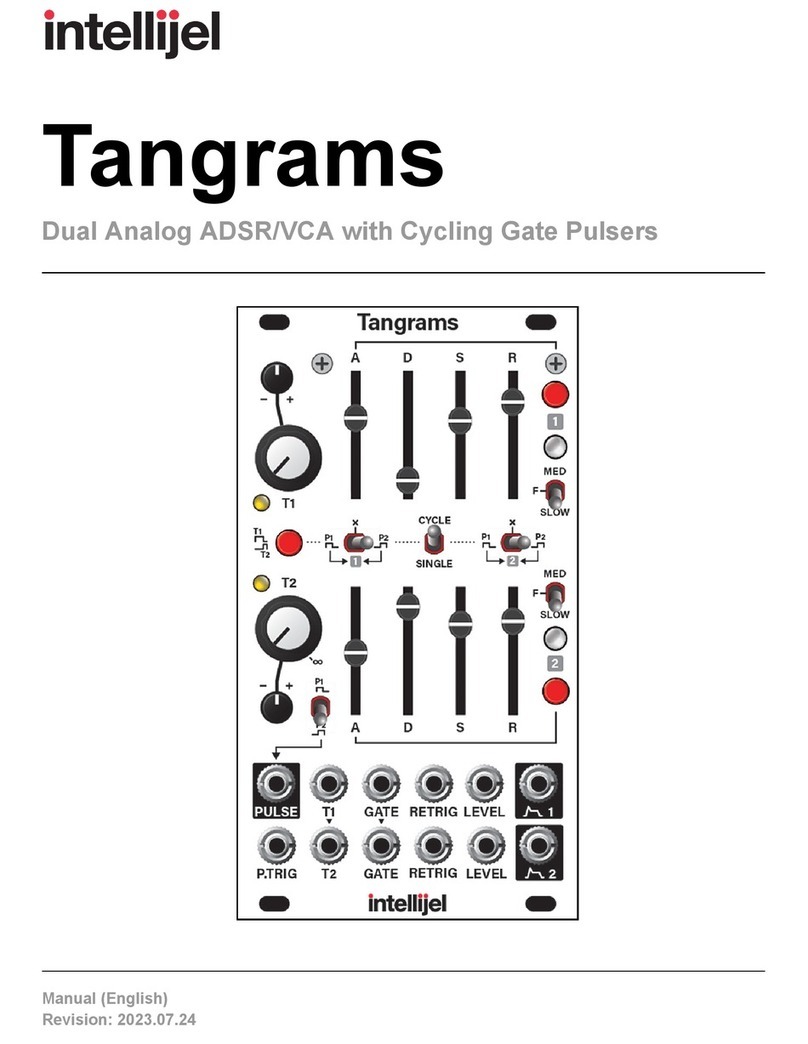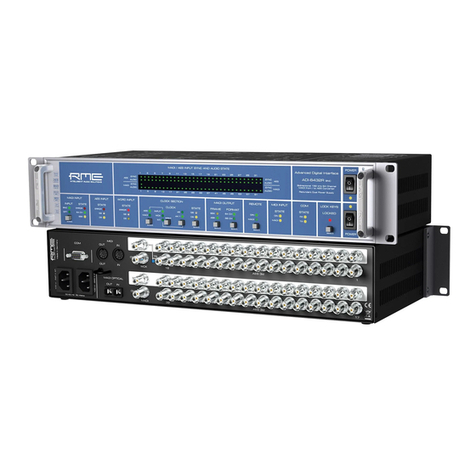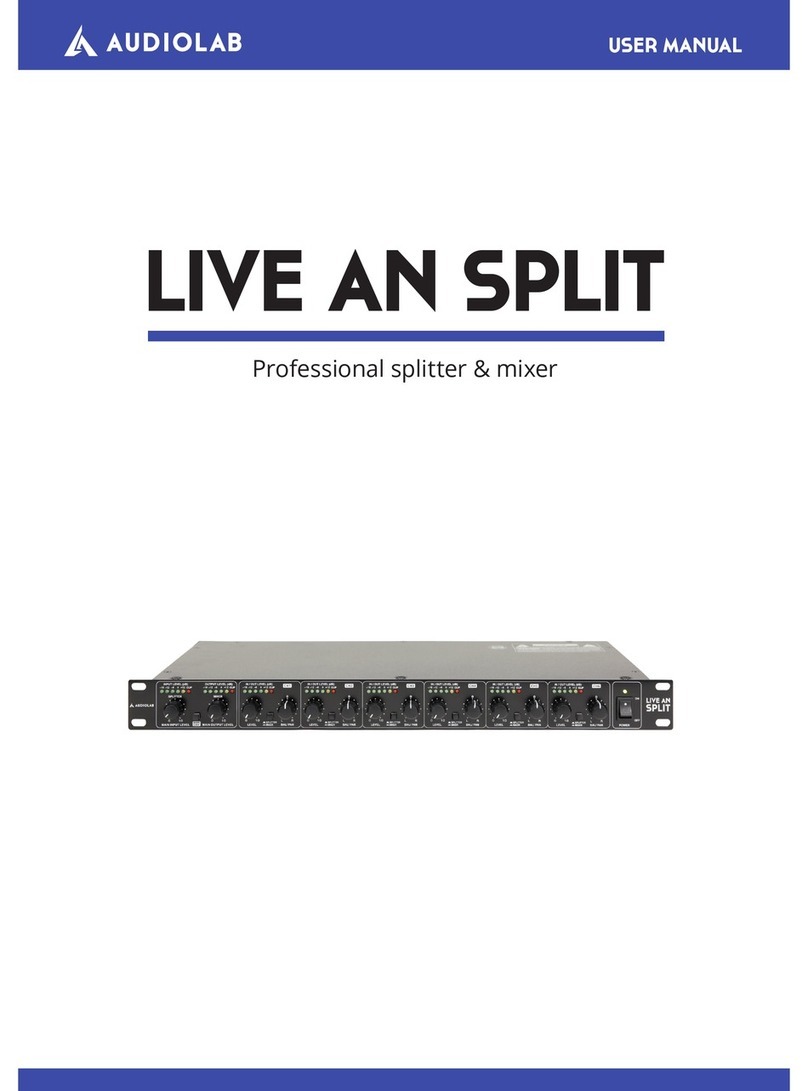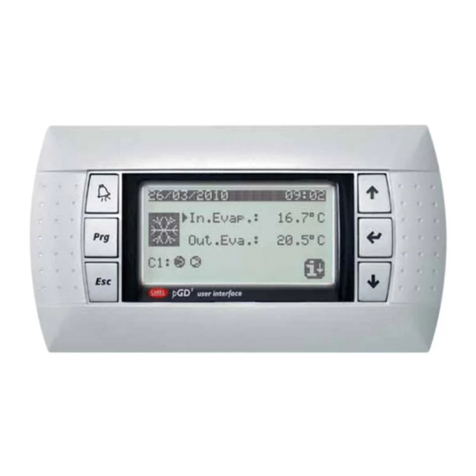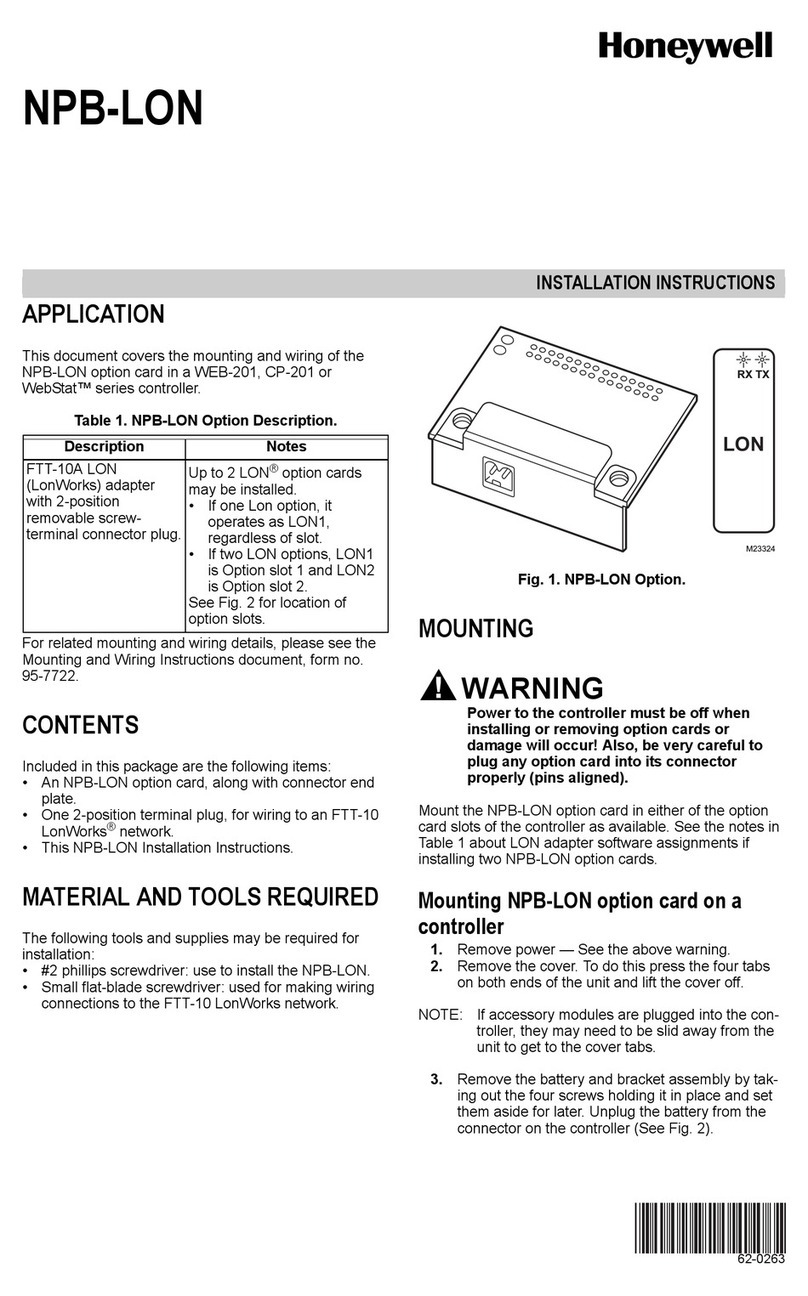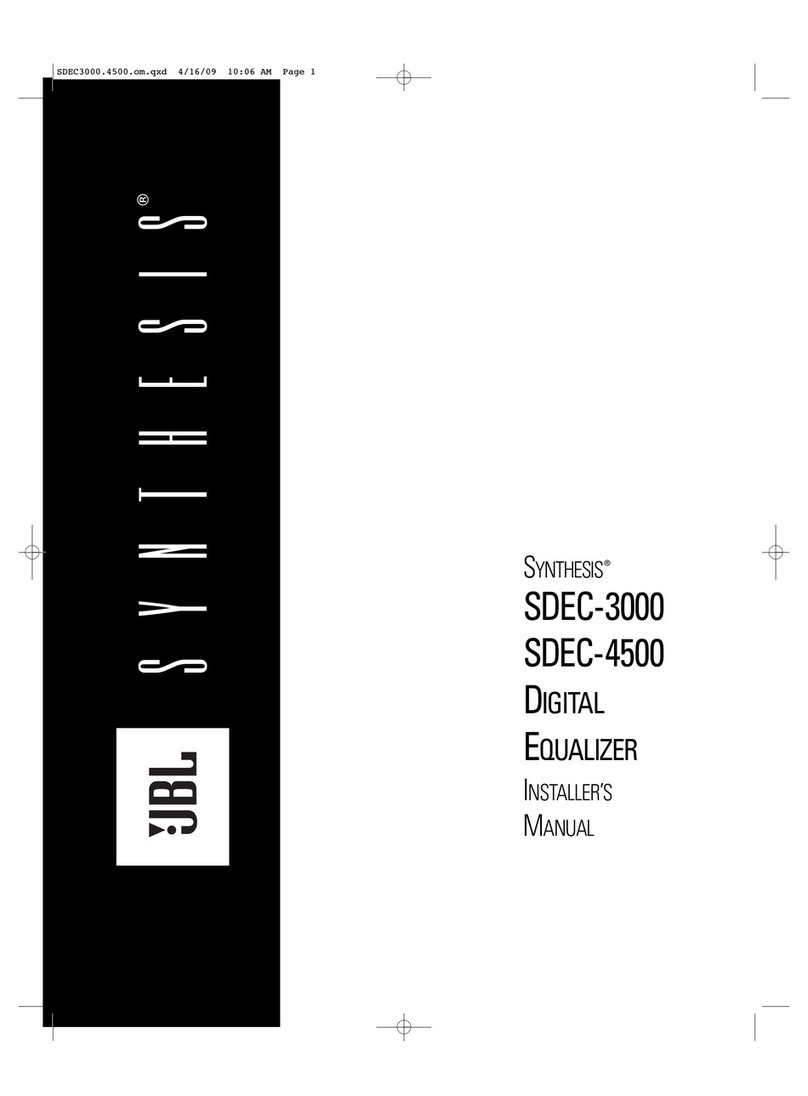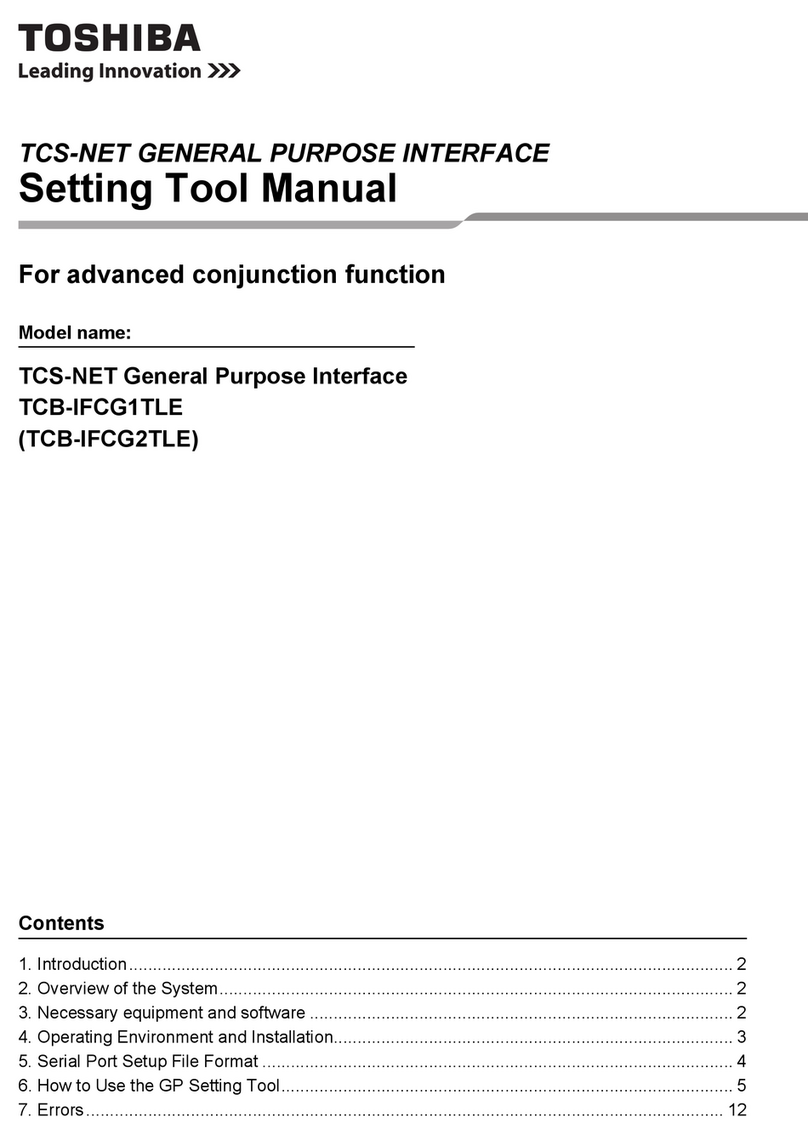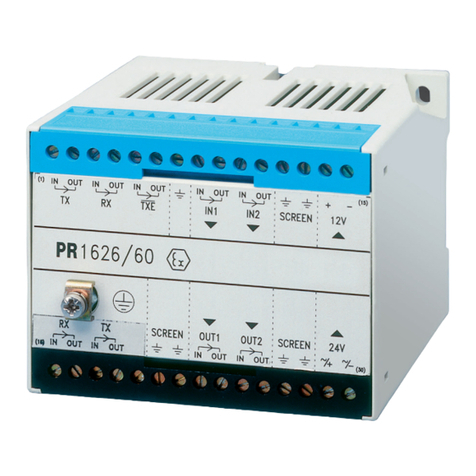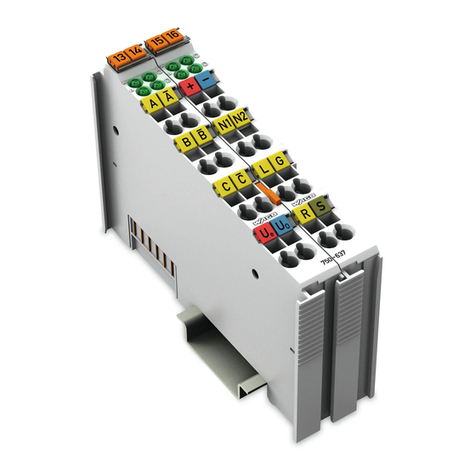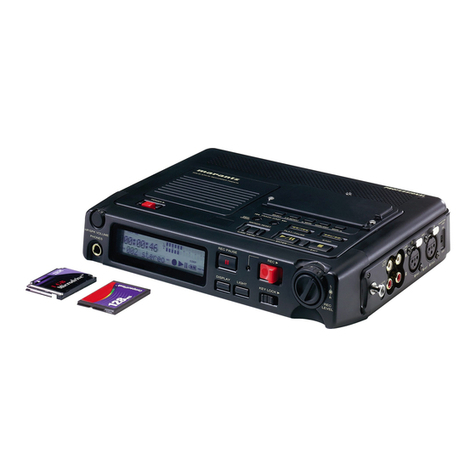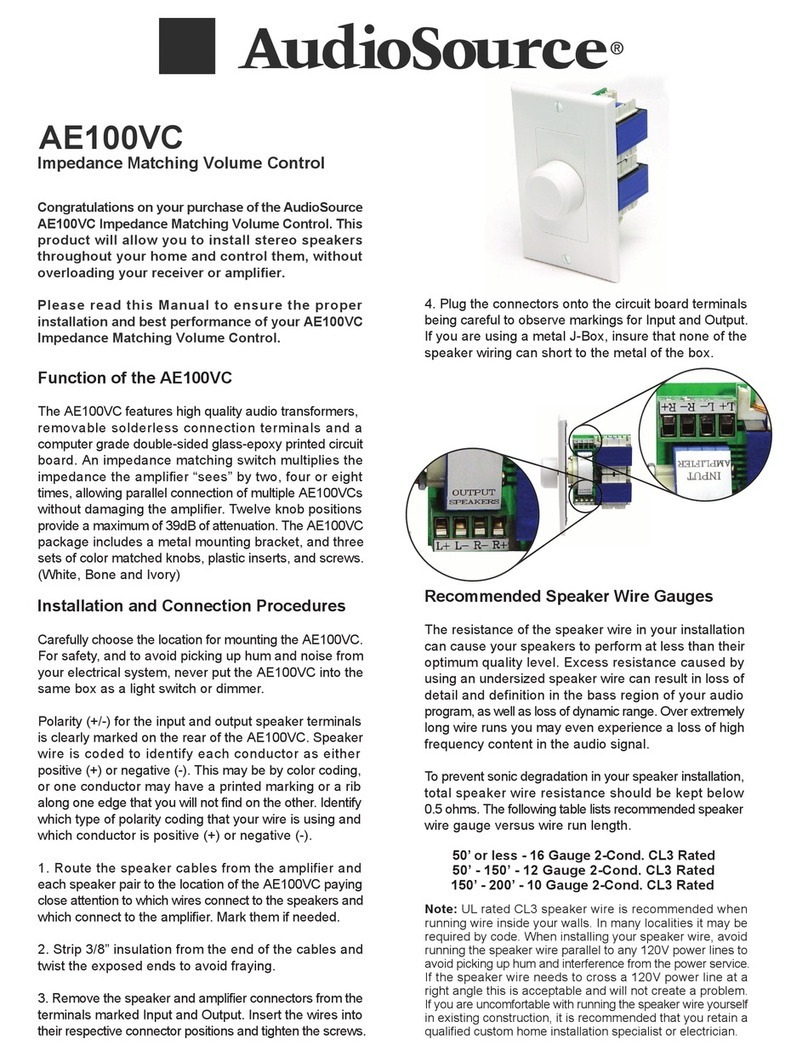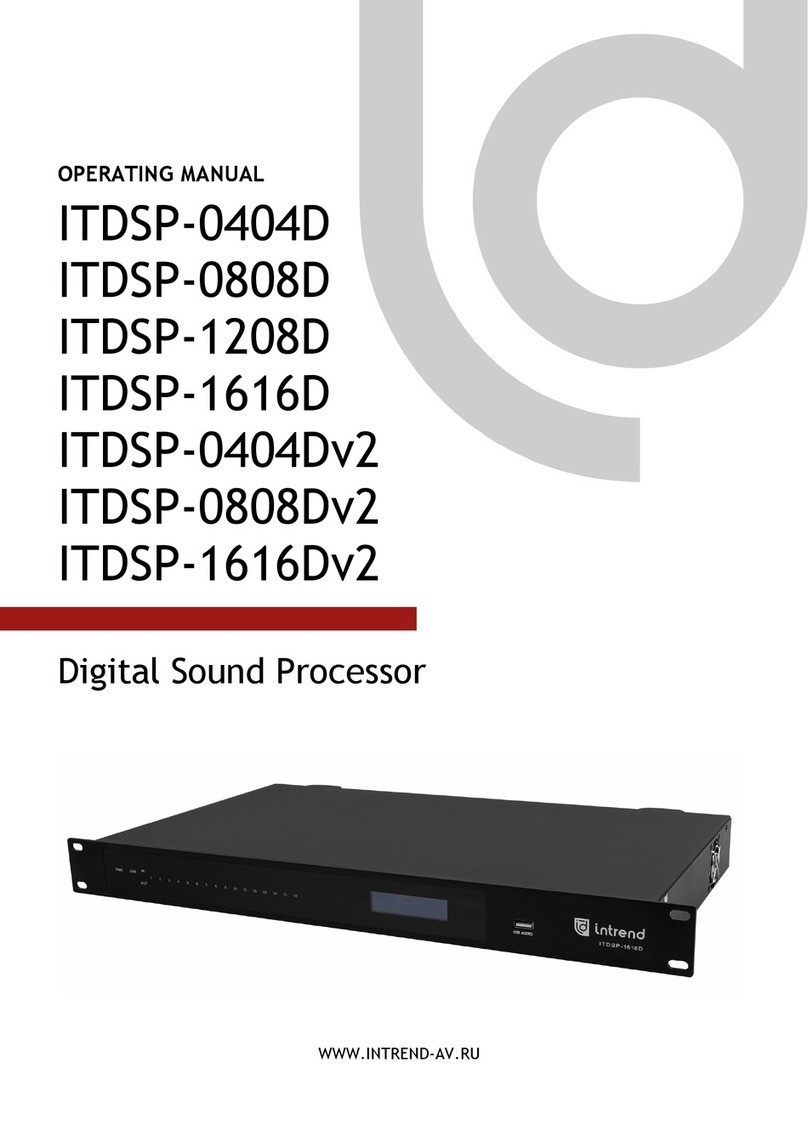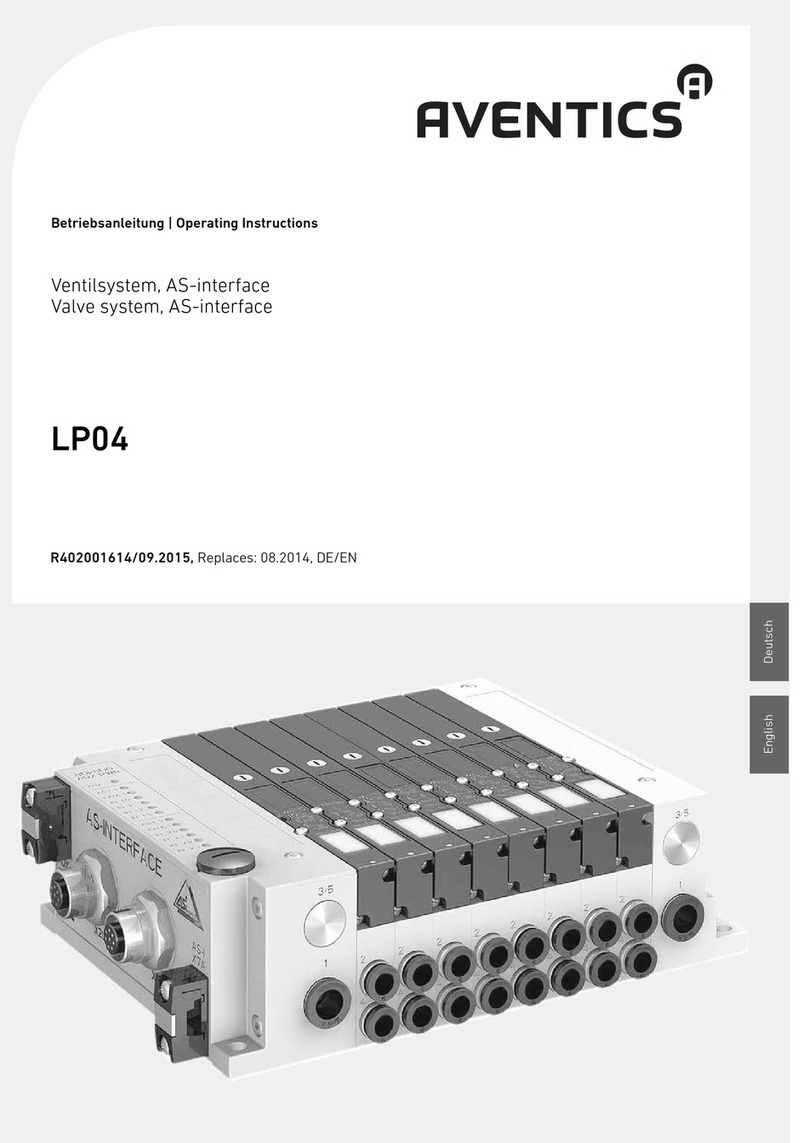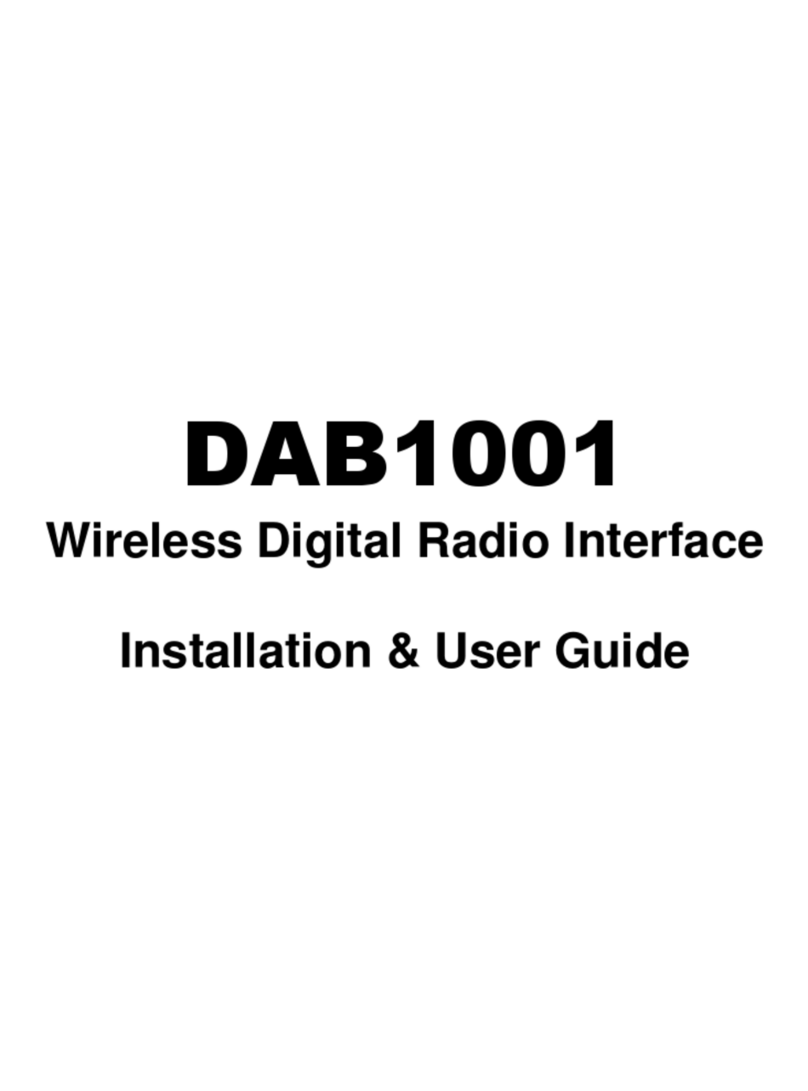Intellijel XFADE 1U User manual

XFADE 1U
Stereo Crossfader
Manual (English)
Revision: 2022.11.18

COMPLIANCE
This device complies with Part 15 of the FCC Rules. Operation is subject to
the following two conditions: (1) this device may not cause harmful
interference, and (2) this device must accept any interference received,
including interference that may cause undesired operation.
Changes or modifications not expressly approved by Intellijel Designs, Inc.
could void the user’s authority to operate the equipment.
Any digital equipment has been tested and found to comply with the limits for a
Class A digital device, pursuant to part 15 of the FCC Rules. These limits are
designed to provide reasonable protection against harmful interference when
the equipment is operated in a commercial environment. This equipment
generates, uses, and can radiate radio frequency energy and, if not installed
and used in accordance with the instruction manual, may cause harmful
interference to radio communications.
This device meets the requirements of the following standards and directives:
EMC: 2014/30/EU
EN55032:2015 ; EN55103-2:2009 (EN55024) ; EN61000-3-2 ; EN61000-3-3
Low Voltage: 2014/35/EU
EN 60065:2002+A1:2006+A11:2008+A2:2010+A12:2011
RoHS2: 2011/65/EU
WEEE: 2012/19/EU
XFADE 1U Manual 3

INSTALLATION
This module is designed for use within an
Intellijel-standard 1U row, such as contained
within the Intellijel Palette, or 4U and 7U
Eurorack cases. Intellijel’s 1U specification is
derived from the Eurorack mechanical
specification set by Doepfer that is designed to
support the use of lipped rails within industry
standard rack heights.
Before You Start
Before installing a new module in your case, you must ensure your power supply has a free power
header and sufficient available capacity to power the module:
● Sum up the specified +12V current draw for all modules, including the new one. Do the same for
the -12 V and +5V current draw. The current draw will be specified in the manufacturer's
technical specifications for each module.
● Compare each of the sums to specifications for your case’s power supply.
● Only proceed with installation if none of the values exceeds the power supply’s specifications.
Otherwise you must remove modules to free up capacity or upgrade your power supply.
You will also need to ensure your case has enough free space (hp) to fit the new module. To
prevent screws or other debris from falling into the case and shorting any electrical contacts, do not
leave gaps between adjacent modules, and cover all unused areas with blank panels. Similarly, do
not use open frames or any other enclosure that exposes the backside of any module or the power
distribution board.
You can use a tool like ModularGrid to assist in your planning. Failure to adequately power your
modules may result in damage to your modules or power supply. If you are unsure, please contact
us before proceeding.
XFADE 1U Manual 4

Installing Your Module
When installing or removing a module, always turn off
the power to the case and disconnect the power cable.
Failure to do so may result in serious injury or equipment
damage.
Ensure the 10-pin connector on the power cable is
connected correctly to the module before proceeding.
The red stripe on the cable must line up with the -12V
pins on the module’s power connector. The pins are
indicated with the label -12V, a white stripe next to the
connector, the words “red stripe”, or some combination of
those indicators. Some modules have shrouded headers
to prevent accidental reversal.
Most modules will come with the cable already
connected, but it is good to double check the orientation.
Be aware that some modules may have headers that
serve other purposes so ensure the cable is connected
to the correct one.
The other end of the cable, with a 16-pin connector,
connects to the power bus board of your Eurorack case.
Ensure the red stripe on the cable lines up with the -12V
pins on the bus board. On Intellijel power supplies the
pins are labeled with “-12V” and/or a thick white stripe,
while others have shrouded headers to prevent
accidental reversal:
If you’re using another manufacturer’s power supply,
check their documentation for instructions.
Before reconnecting power and turning on your modular
system, double check that the ribbon cable is fully seated
on both ends and that all the pins are correctly aligned. If
the pins are misaligned in any direction or the ribbon is
backwards you can cause damage to your module,
power supply, or other modules.
After you have confirmed all the connections, you can
reconnect the power cable and turn on your modular system. You should immediately check that all
your modules have powered on and are functioning correctly. If you notice any anomalies, turn your
system off right away and check your cabling again for mistakes.
XFADE 1U Manual 5

OVERVIEW
XFADE 1U is a classic DJ-style stereo crossfader, with a few extra tricks up its sleeve. It has an “A”
side with L+R inputs; and a “B” side, also with L+R inputs. The Crossfader blends the two signals
together — crossfading one into the other depending on the position of the slider and the selected
XFADE Shape. The blended output appears at the MIX L and MIX R output jacks.
In addition, XFADE 1U can be used as a modulation source for controlling other modules, since the
crossfader also outputs control voltages from the CV A and CV B jacks. A switch determines
whether these voltages are unipolar (crossfading from 0V to 5V; and 5V to 0V), or bipolar
(crossfading from -5V to +5V; and +5V to -5V). The two LEDs indicate the polarity and relative
levels of the CV A and CV B signals.
XFADE 1U uses a precision Innofader™ crossfader, with moving capacitance technology for
smooth and precise control.
XFADE 1U Manual 6

FRONT PANEL
Inputs
[A] “A” L IN - LEFT input
for the “A” side of the
crossfader.
[B] “A” R IN - RIGHT
input for the “A” side
of the crossfader. If
nothing is plugged
into this jack, then the
input of the “A” L IN [A] jack is normalled to it.
[C] “B” L IN - LEFT input for the “B” side of the crossfader.
[D] “B” R IN - RIGHT input for the “B” side of the crossfader. If nothing is plugged into this jack,
then the input of the “B” L IN [C] jack is normalled to it.
Outputs
[E] MIX L Out - The blended (mixed) LEFT output of the “A” side and “B” side LEFT inputs. The
amount of each input present in the mix is determined by the position of the Crossfader [1]
and the selected XFADE Shape [2] .
[F] MIX R Out - The blended (mixed) RIGHT output of the “A” side and “B” side RIGHT inputs. The
amount of each input present in the mix is determined by the position of the Crossfader [1]
and the selected XFADE Shape [2] .
[G] CV A Out - Outputs a voltage that corresponds to the position of the Crossfader [1] relative to
the “A” side. The actual voltage is determined by 1) how close the crossfader is to the “A” side;
2) the selected XFADE Shape [2] ; and 3) the Polarity [3] switch.
[H] CV B Out - Outputs a voltage that corresponds to the position of the Crossfader [1] relative to
the “B” side. The actual voltage is determined by 1) how close the crossfader is to the “B” side;
2) the selected XFADE Shape [2] ; and 3) the Polarity [3] switch.
XFADE 1U Manual 7

Controls
[1] Crossfader - Sets
the relative balance
between the signal
appearing at the
“A” side L/R [A/B]
inputs and the signal
appearing at the
“B” side L/R [C/D]
inputs, sending the blended signals to the MIX L [E] and MIX R [F] outputs.
Additionally, the crossfader determines control voltage levels sent out the CV A [G] and
CV B [H] jacks. The closer the fader is to the “A” side, the greater the absolute voltage sent out
CV A and the less sent out CV B. Similarly, the closer the fader is to the “B” side, the greater
the absolute voltage sent out CV B, and the less sent out CV A. The way in which one voltage
crossfades into the other is set by the XFADE Shape [2] switch. The Polarity Switch [3] sets
whether the voltages crossfade between 0V and 5V (“UNI” position) or between -5V and +5V
(“-/+” position).
[2] XFADE Shape Switch - Sets the XFADE shape, which determines exactly how the “A” side
crossfades into the “B” side as you move the crossfader. There are three positions:
● DJ CUT (left position): This shape is
used to instantly cut (or add) a signal
to the mix. As the crossfader moves
left-to-right, the level present from the
“A” side stays at max, until it’s about
95% to the right, at which point it
quickly decreases. Meanwhile, the “B”
side level quickly increases to its
maximum about 5% into the
crossfade; where it stays for the
remainder of the fade. Throughout
most of the middle range, both the “A”
side and “B” side levels are at their
maximum.
XFADE 1U Manual 8

● CONSTANT POWER (middle
position): As the crossfader moves
left-to-right, the level present from the
“A” side decreases in amplitude as the
level present from the “B” side
increases in amplitude. In the middle,
both the “A” side and “B” side levels
are reduced by 3dB, ensuring the
output retains a constant level
summation.
● LINEAR (right position): As the
crossfader moves left-to-right, the
level present from the “A” side linearly
decreases in amplitude as the level
present from the “B” side linearly
increases in amplitude. In the middle,
“A” side levels and “B” side levels are
both cut by 50%.
XFADE 1U Manual 9

[3] Polarity Switch -
Sets whether the
voltages sent from
CV A [G] and
CV B [H] are
Unipolar or Bipolar:
● UNI (UP) : In
this position, the
voltage sent out CV A or CV B is +5V at the maximum level, and 0V at the minimum level.
● -/+ (DOWN) : In this position, the voltage sent out CV A or CV B is +5V at the maximum
level, and -5V at the minimum level.
[4] LEDs - These indicate the amount and polarity of the voltage sent out CV A [G] (left LED) and
CV B [H] (right LED) jacks. Green indicates a positive voltage, while red indicates negative.
The brightness of the LED reflects the absolute voltage level.
BACK PANEL
Aside from the usual power connector, the back panel also contains a 3-pin Link connector, and
each XFADE 1U module ships with one 3-pin Link cable. Use this to connect XFADE 1U’s MIX
output to the input of a compatible, 3-pin equipped Intellijel module (such as a Mixup ), or to the
3-pin Link connector that feeds the output jacks on your Intellijel 7U or Palette case. See those
manuals for more information. Using the 3-pin Link cable negates the need to patch the
MIX L Out [E] and MIX R Out [F] jacks to your Mixup or audio output module via the front panel.
IMPORTANT : Never use the 3-wire Link cable to directly connect a XFADE 1U module to an
Intellijel Pedal I/O module. Although both modules use this same cable/connector — they serve
different purposes and carry different signals.
TECHNICAL SPECIFICATIONS
Width
26 hp
Maximum Depth
38 mm
Current Draw
48 mA @ +12V
41 mA @ -12V
XFADE 1U Manual 10
Table of contents
Other Intellijel Recording Equipment manuals
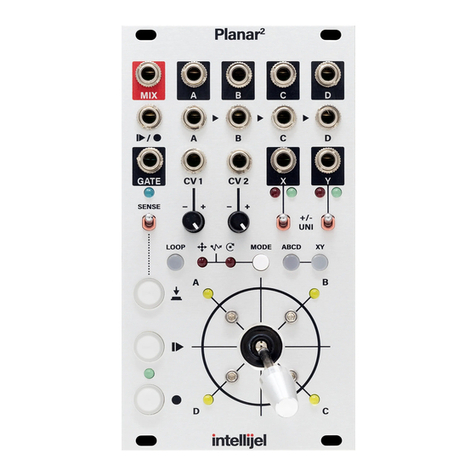
Intellijel
Intellijel Planar2 User manual
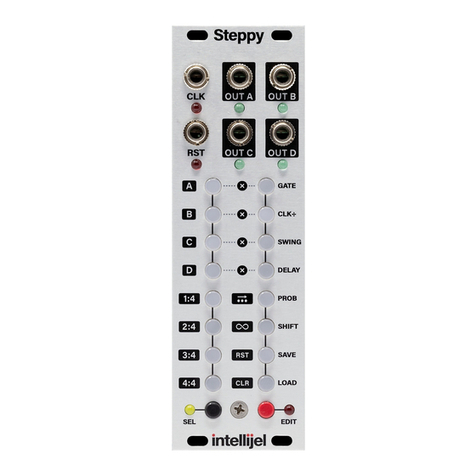
Intellijel
Intellijel Steppy 3U User manual

Intellijel
Intellijel MIDI 1U User manual
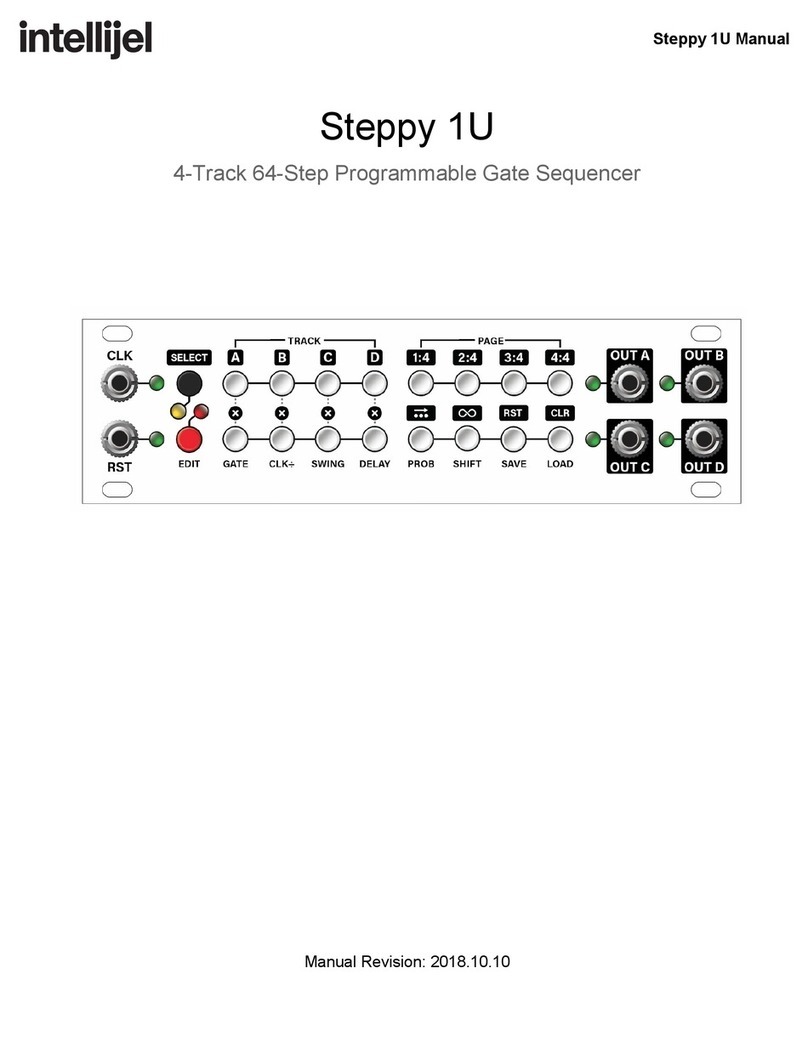
Intellijel
Intellijel Steppy 1U User manual
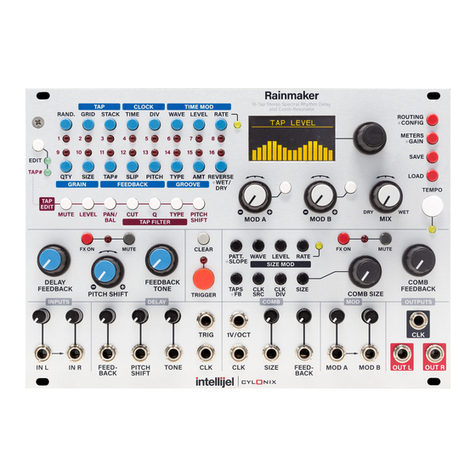
Intellijel
Intellijel CYLONYX Rainmaker User manual

Intellijel
Intellijel Quadrax User manual

Intellijel
Intellijel Passive LPG 1U User manual
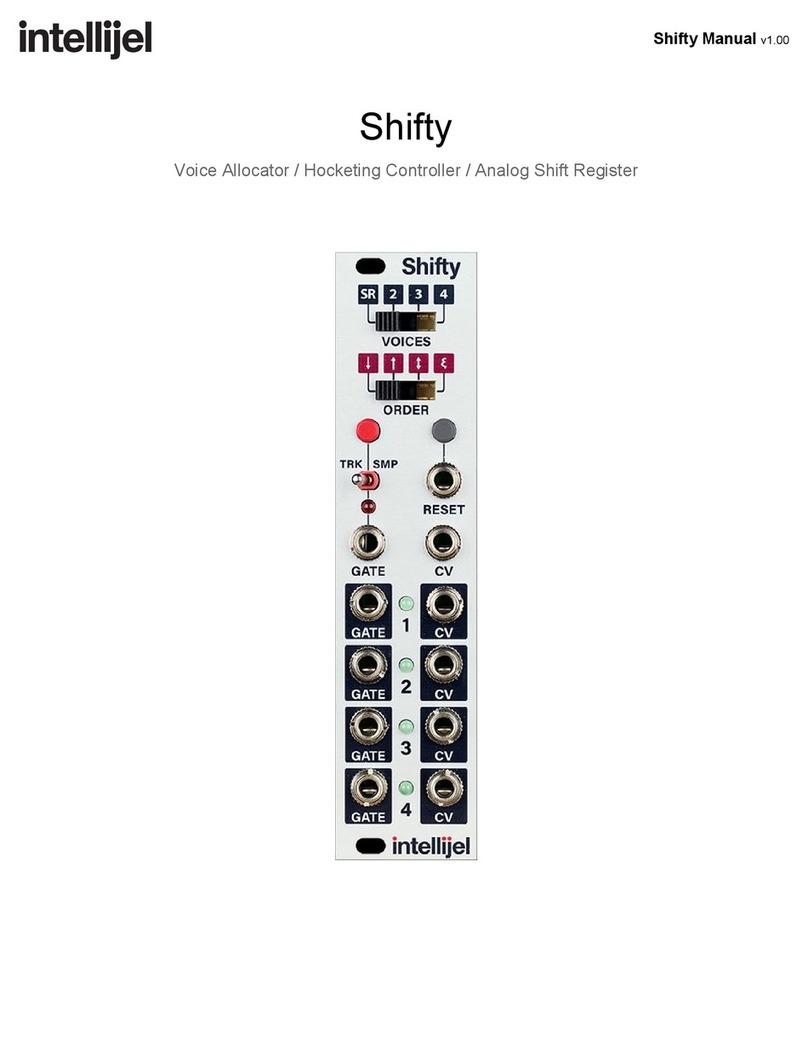
Intellijel
Intellijel Shifty User manual
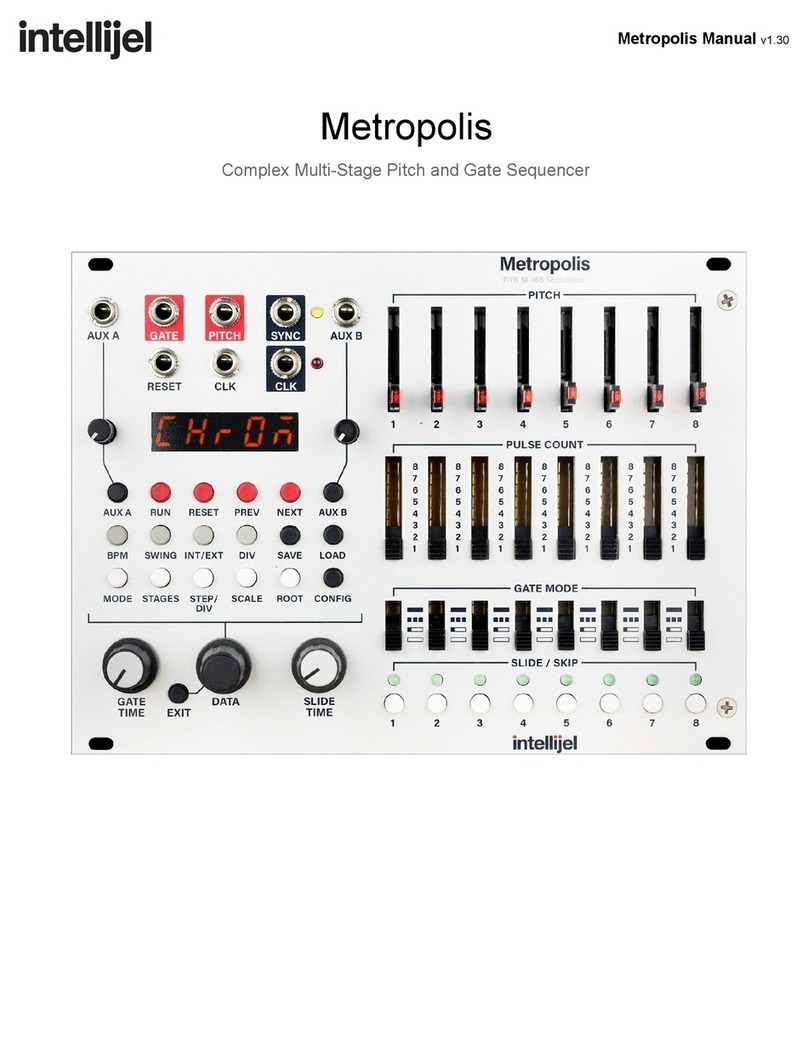
Intellijel
Intellijel Metropolis User manual
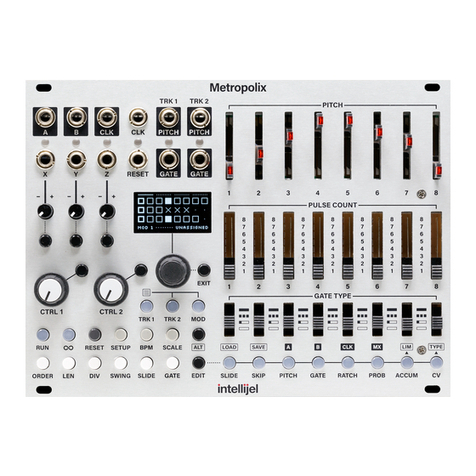
Intellijel
Intellijel Metropolix User manual



